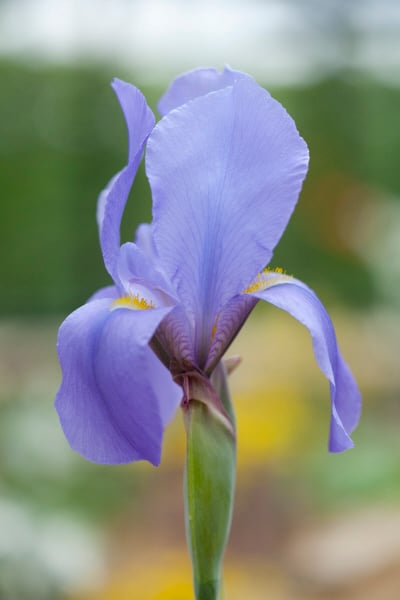Size
Ultimate height
0.5–1 metresTime to ultimate height
2–5 yearsUltimate spread
0.1–0.5 metresGrowing conditions
Moisture
Well–drainedpH
Acid, Alkaline, NeutralColour & scent
| Stem | Flower | Foliage | Fruit | |
| Spring | Blue | Green | ||
|---|---|---|---|---|
| Summer | Green | |||
| Autumn | ||||
| Winter |
Position
- Full sun
Aspect
South–facing
Exposure
Sheltered Hardiness
H5Botanical details
- Family
- Iridaceae
- Native to GB / Ireland
- No
- Foliage
- Deciduous
- Habit
- Bushy
- Potentially harmful
- Harmful if eaten. Wear gloves and other protective equipment when handling. Pets: Harmful if eaten. For further information and contact numbers regarding pets, see the HTA guide to potentially harmful plants
- Genus
Iris may be rhizomatous or bulbous perennials, with narrow leaves and erect stems bearing flowers with 3 large spreading or pendent fall petals, alternating with 3 erect, often smaller, standard petals, in late winter, spring or early summer
- Name status
Correct
- Plant range
- Tadzhikistan, Uzbekistan
How to grow
Cultivation
It can be difficult to grow in a garden situation as it comes from areas with dry, cold winters, dry summers and wet spring. Though hardy, wet winters encourage growth that is prone to cold damage. Outdoors grow in very well-drained soil in full sun. Best grown in a bulb frame in containers using gritty, free-draining compost, keep dry during the summer
Propagation
Propagate by seed or by division after flowering
Suggested planting locations and garden types
- Gravel garden
- Wall side borders
- Flower borders and beds
Pruning
Remove withered foliage
Pests
Diseases
May be susceptible to a virus infection and leafspot
Get involved
The Royal Horticultural Society is the UK’s leading gardening charity. We aim to enrich everyone’s life through plants, and make the UK a greener and more beautiful place.
